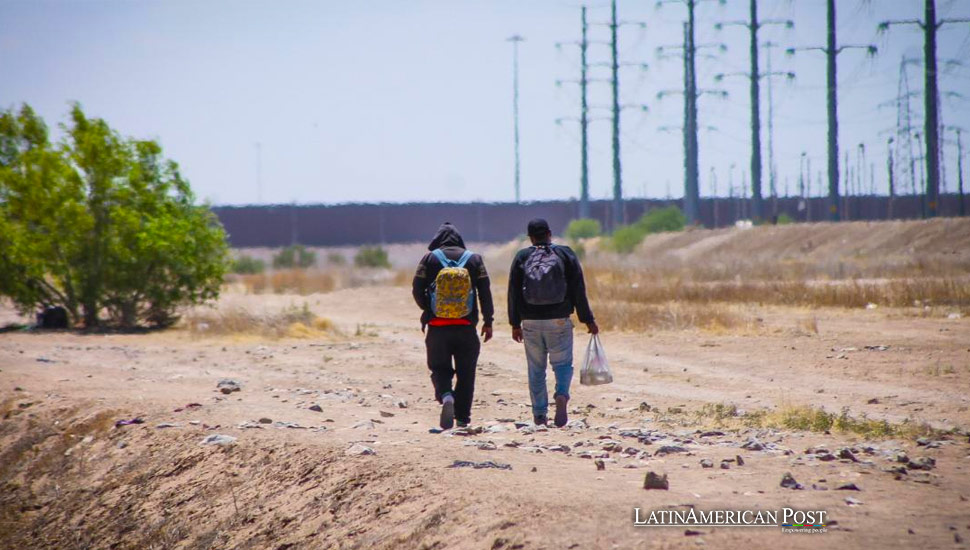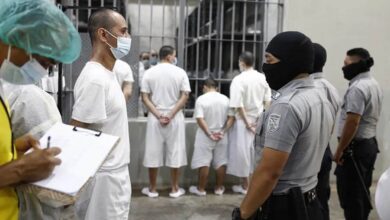Peruvian Migration to the U.S.: A Crisis of Geography and Policy

As Peru faces new visa restrictions from Mexico, the perilous journey to the United States via alternative routes like the notorious Darien Gap highlights the dire consequences of stringent immigration policies.
The AP reported that Julia Paredes’ decision to move to the United States was fueled by urgency and desperation. With Mexico set to impose visa requirements on Peruvians, her window to make the journey by air was closing fast. This change forced Paredes, like many others, to consider more dangerous routes to reunite with family in Dallas, risking a dangerous overland trek rather than a direct flight.
Migration Policies in Latin America
Mexico’s decision to require visas from Peruvians, implemented to curb a substantial increase in migrants, mirrors actions previously taken against nationals from Venezuela, Ecuador, and Brazil. This policy shift reflects a broader regional crackdown to manage unprecedented migration flows from Latin America to the United States.
Paredes, who previously served lunch to miners in Arequipa, Peru, borrowed money to fly to Tijuana. From there, smugglers guided her through a remote border opening into California. Alongside about a hundred migrants from diverse origins, she endured cold and uncertainty, waiting for overwhelmed U.S. Border Patrol agents to process them.
Senior U.S. officials have lauded Mexico’s stringent measures as crucial tools to combat illegal migration. However, critics argue that these policies push migrants toward even more hazardous pathways, as evidenced by the spike in crossings through the Darien Gap—a dense jungle on the border of Panama and Colombia known for its treacherous conditions.
Following Mexico’s visa mandate in January 2022, illegal migration by Venezuelans initially plummeted but soon surged as migrants turned to the Darien route. Last year, Venezuelans comprised nearly two-thirds of the record 520,000 migrants who braved this jungle, joined by over 25,000 Chinese nationals who typically flew to visa-lenient Ecuador before making their way north.
Rerouting Migration Routes
The surge in migrants from countries like Peru and Venezuela navigating the Darien Gap underlines a harsh reality: restrictive policies do not stop migration; they merely reroute it through more dangerous corridors. This shift poses increased risks and leads to more human suffering, challenging the effectiveness and humanity of stringent border controls.
Mexico’s new visa requirement marks the first such mandate for Peruvians since 2012, responding to what Mexico describes as a “substantial increase” in illegal migration. This policy change came after Peruvian arrivals in Mexico skyrocketed from an average of 544 monthly stops in early 2022 to 2,160 from January to March 2023. Similarly, Peruvian encounters at the U.S. border spiked, reflecting broader regional dynamics where economic hardship and political instability push individuals to undertake these dangerous journeys.
The story of migrants like Miguel Yaranga, who was puzzled by his 2025 court date in New York after being detained and released by the Border Patrol in San Diego, highlights the complex layers of migration issues. Many migrants are caught in limbo, with long backlogs in the U.S. immigration courts allowing them time to work and establish roots but offering no permanent resolution.
Jeremy MacGillivray of the U.N.’s International Organization for Migration predicts that while Peruvian migration might temporarily decline, it will likely rebound as migrants find new routes through Central America and Mexico. This resilience in migration patterns suggests that without addressing the root causes—poverty, violence, and political instability—migrants will continue to seek better opportunities, regardless of the barriers erected in their path.
In Tijuana, migrants from Colombia and other Latin American countries recount the arduous segments of their journey, highlighting the broader implications of U.S. and Mexican immigration policies. Many endure robbery and extortion as they navigate through Mexico, a reflection of the dangerous underbelly of forced migration.
In response to Mexico’s visa requirements, countries like El Salvador have opened their doors visa-free to Peruvians, offering a brief respite from the harsh policies elsewhere. However, these migrants still face daunting overland treks through Mexico, where dangers abound.
Human Stories and Policy Imperatives
The experiences of individuals like Oscar Palacios from Ecuador, who chose to walk through the Darien Gap due to financial constraints, and Bryan Ramírez from Colombia, who braved the elements and the uncertainties of the journey with his girlfriend, paint a vivid picture of the human cost of migration. These stories of perseverance and hardship underscore the urgent need for comprehensive and humane reform in regional migration policies.
As Latin America grapples with the consequences of these migration trends, the focus must shift from merely managing borders to creating sustainable solutions that address migrants’ economic and security needs. This approach involves not only regional cooperation but also a profound commitment to addressing the systemic issues that drive people to leave their homes.
In conclusion, while the United States and Mexico strive to control their borders, the real challenge lies in fostering conditions in Latin American countries that prevent the need for such perilous journeys. Effective policy must go beyond enforcement and include development aid, investment in social services, and support for legal migration pathways that offer hope and opportunities to those seeking a better life.
Addressing the root causes of migration requires a multifaceted strategy that includes economic development, education, healthcare, and legal reforms within these nations. The migration pressure will lessen only by creating environments where people can thrive socially and economically. It also means acknowledging and tackling the corruption, violence, and political instability that often drive people away from their homes.
International Collaboration
Furthermore, international collaboration and understanding are vital. The role of developed nations, particularly the United States, in consuming drugs that fuel violence in Latin America and their responsibility to aid economic stability cannot be overlooked. By partnering with Latin American countries to improve local conditions and reforming immigration policies to be more humane and efficient, developed nations can help create a safer, more prosperous hemisphere.
Also read: Peru’s Presidential Crisis Expands from Rolexes to Bracelets and Bank Deposits
As Latin America and its northern neighbors continue to navigate these complex migration dynamics, it’s essential to remember the human stories behind the statistics. Policies that focus on humanity and the dignity of all people are ethically imperative and most likely to lead to long-term sustainable solutions. For individuals like Julia Paredes and countless others, the pursuit of safety and a better life is a fundamental human drive that no wall, policy, or barrier can extinguish.





